In this blog Misha Madhavan M, N H Mohan and V. K. Gupta argue that, for uplifting the piggery sector in India, we need to overcome certain challenges and strengthen our Extension and Advisory Services. They also highlight the role and performance of different actors in the pork value chain.
CONTEXT
Pig rearing is an important means of livelihood for the tribal population in the North-Eastern Region of India and is associated with socio-cultural fabric of the region. Pig farming has been identified as one the key areas for poverty reduction and agri-business venture. Increasing demand, short generation interval, high feed conversion efficiency, and large litter size, makes pig farming an attractive option for investment and profitability. Unlike other livestock sectors, the pig sector is neither well-developed nor suitably organized in India. The major share of pigs is held by smallholders in India. Several households in North Eastern India rear one to two pigs under the backyard farming system for earning their livelihood and source of dietary protein (Mahak et al. 2020). To bridge demand-supply gap, for pigs and pork, which is almost 50%, the commercial pig farms are on steady increase in the North-Eastern Region of India.
|
Current Status of the Piggery Sector in India |
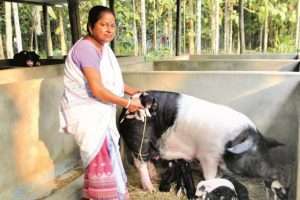 Farm woman caring newborn piglets
Farm woman caring newborn piglets
MAJOR CHALLENGES IN THE PIGGERY SECTOR
Pig farming in the country also faces some major challenges, which are to be tackled in an appropriate way for overall development of the sub-sector. Specific challenges can be listed under different heads, such as challenges specific to backyard piggery, challenges specific to commercial farms, challenges related to value chains, and challenges specific to lack of scientific knowledge. The generic and specific challenges in piggery value chain are listed in Figure 1. Non-availability of superior germplasm in farmer’s field is one of the major bottlenecks that limit pig production. Traditionally, farmers are rearing indigenous or nondescript pigs with relatively lower growth rate and productivity as compared to exotic or crossbred germplasm. Few animals are maintained besides the sheds made of locally available materials and fed with kitchen, vegetable waste, tubers such as colocasia and rice beer waste (jugli) in a low input system. Most the farmers procure piglets and grew for a period until achievement of marketable age and sell in local market or to butchers. Therefore, reduced number of breeder farmers limits production of superior germplasm in the field conditions. The linkage between production units also needs to be strengthened to promote exchange of germplasm to reduce inbreeding.
It has been observed that the difficulties of maintain boars and limited resources for maintaining several animals, restricts development of breeder farmers. Here, the artificial insemination (AI) technology can contribute to the production of a large number of quality germplasm in a low cost and effective manner, without actually maintaining a boar. Most of the states have a pig breeding policy to promote appropriate breeds suitable for the agro-climatic conditions.
Feed alone costs for 60-70% of pig rearing costs, and hence, high cost of quality feed is another major concern of pig producers. In commercial piggeries where farmers use concentrated feeds for obtaining early market weight for finisher pigs, the cost of feed plays an important role in determining market price of the animals.
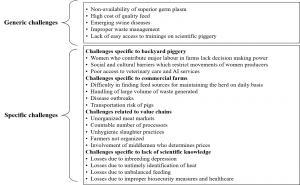 Figure 1: Generic and specific challenges in the piggery sector
Figure 1: Generic and specific challenges in the piggery sector
In recent years, emergence of various pig diseases pose a major threat for pig farming as they are capable of wiping out the entire herd causing severe financial losses. The incidences of African Swine Fever (ASF), Porcine Reproductive and Respiratory Syndrome (PRRS)and re-emergence of Classical Swine Fever (CSF) are some of the major viral diseases of pigs. Lack of vaccines for ASF, PRRS and inadequate veterinary services are major concern. Pig-borne zoonosis is another important challenge which demands special attention from farmers. EAS can play a major role in creating awareness need for adopting proper biosecurity measures in the farm, especially for those diseases for which no vaccines are available.
As pig farms are often blamed for spreading bad odour in the environment, proper cleaning and management of waste is of utmost concern. Integration with fish farming, vermicomposting, biogas production, are some of the solutions for proper waste management in pig farms.
In recent years, the global warming and impending climate change is also posing threats to pig farming. Increase in ambient temperature leading to reduction in feed intake, growth rate, reproductive failure and increased susceptibility to various diseases. The awareness on management of pigs during among the farmers in summer and winter also form the part of EAS programmes.
ACTORS AND THEIR ROLE IN THE PIG OR PORK VALUE CHAIN
The pig sector in India has different value chains where the number of actors and the role performed by them vary (Figures 2 and 3). The pork industry in North East India is mostly unorganized, where smallholders sell their pigs to middlemen at their doorsteps, and later reaches the unorganized markets, where no regular sale records are maintained. In Assam around 81% of pigs are sold to traders and butchers-cum-pork retailers who visit villages for procuring animals (Deka et al. 2019). Several pork retail outlets in rural as well as urban areas of Assam can been seen in local markets, where the fresh meat is cut and distributed to the consumers with limited hygienic practices. Due to the high demand for pork and very few established value chain actors, several entrepreneurs have emerged to bridge this demand-supply gap.
|
In Figure 2, a value chain in which the processing firm plays a major role. The processor has developed a model of extension by reaching the smallholders and development of contract farmers. The ICAR-National Research Centre on Pig, Guwahati, has provided initial support by providing trainings to the start-ups, who subsequently established forward and backward linkages in the piggery sector. Presently, they provide support and services to clusters of smallholder farmers who rear pigs and ensure a sustainable income from piggery and expanded their network through increasing the capital. Similarly, several such startups were initiated, indicating further scope for entry and expansion of entrepreneurs in this sector. In Figure 3, another value chain, without the involvement of processors observed in Assam is presented. In this, the middleman collects finisher pigs from the doorsteps of smallholders and sells those pigs in wholesale markets. Later butchers/retailers buy these animals, slaughter and sell the fresh meat to the consumers in their pork outlets. |
ROLE OF EXTENSION AND ADVISORY SERVICES (EAS) IN THE PIGGERY SECTOR
Currently, the role of EAS in piggery is played by public, private and Non-Governmental Organizations with limited convergence at the ground level (Figure 4). The State Animal Husbandry and Veterinary Department, KVKs, State and Central Agricultural Universities, ICAR institutes and NGOs are some of the major stakeholders for extension services. The diversity of animals to be handled and wider range of job requirements apparently leads to generalized EAS activities rather than those specific to pig producers. On an average, farmers are 3.2 kilometres away from veterinary services of public and private institutions in Assam (Deka et. al. 2019). Value chain-based extension in piggery still has a long way to go.
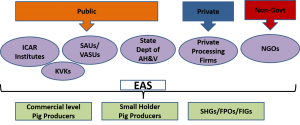 Figure 4: Different actors who play the role of EAS in piggery sector
Figure 4: Different actors who play the role of EAS in piggery sector
The National Livestock Mission (NLM), implemented by Department of Animal Husbandry and Dairying, Government of India, with the objective of sustainable development of livestock sector in the country covers a sub-mission on Pig Development in North-Eastern Region (NER). Under this scheme different components such as Entrepreneurship Development and Employment Generation (EDEG), modernization of breeding infrastructure, risk management and insurance, and establishment of rural slaughter houses provide a boost to the piggery sector by ensuring credit support.
ICAR research institutes, including ICAR-NRC on Pig, Guwahati; ICAR-Research Complex for NEH Region, Umiam, Meghalaya, ICAR-IVRI, Bareilly are conducting a large number of capacity development programmes including trainings, agri-business incubation support, and demonstrations for supporting pig producers and processors. Scientific pig farming is also supported by providing free trainings, quality germplasm, Artificial Insemination (AI) services, along with inputs like feed, medicines, vaccines etc., under Tribal Sub Plan (TSP) and Scheduled Caste Sub Plan (SCSP) schemes.
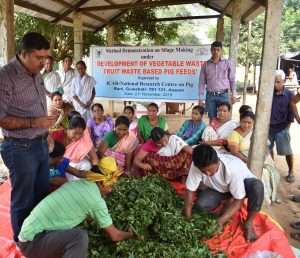 Demonstration of silage making with vegetable waste by scientists of ICAR-NRC on Pig
Demonstration of silage making with vegetable waste by scientists of ICAR-NRC on Pig
The private pork processing companies also provide EAS for ensuring the continuous supply of good quality pigs reared in smallholder systems. This ensures that the farmers get enough technical and financial support for rearing pigs and purchase pigs regularly from them without compromising on the quality of the animal, hence the meat produced. The Non-Governmental Organizations (NGOs), also assist farmers and farmer groups to create backward and forward linkages. Under the World Bank-funded ‘Assam Agribusiness and Rural Transformation Project (APART) ’ the main objective is of adding value and improving resilience of selected agriculture value chains, focusing on smallholder farmers and agro-entrepreneurs in targeted districts of the State of Assam. Under the project, the piggery sector is getting targeted EAS from different service providers together with better convergence in Assam.
THE WAY FORWARD
The piggery sub-sector in India demands more focused EAS for its expansion and profitablity. Being a sector with immense scope for profit generation, the expectation from the farmers and entrepreneurs are ever increasing. Through focused EAS, we can strengthen and expand the existing value chains in piggery sector. Some suggestions from the field experience in North Eastern India are given below
- The convergence and strengthening of EAS activities by different agencies should be done. Under different schemes, capacity development programmes are being organized in randomly selected villages, that can lead to overlap of inputs distributed. Similarly, the programs with monitoring and follow-up can result in large outcomes.
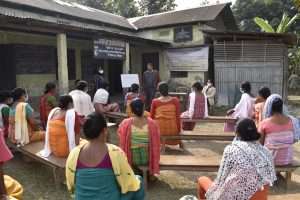 Piggery Farmer Field School organized by ICAR-NRC on Pig at Kamrup District, Assam
Piggery Farmer Field School organized by ICAR-NRC on Pig at Kamrup District, Assam
- In North Eastern India, tribal women play a major role in the backyard pig rearing system. Therefore, gender specific sensitization programs will be required for their empowerment, in which female extension professionals have an important role to play. One of the suggestions would be to include female resource persons with proficiency in local language to encourage them to come forward for initiating and continuing piggery-based entrepreneurship.
- In recent years, group-based EAS has received tremendous acceptance in agriculture and livestock sector. Establishment of Farmer Producer Organizations for improving the bargaining power of smallholders can strengthen piggery value chain. In the piggery sector there is requirement for development and nurture of more FPOs for ensuring sustainability.
The role of EAS in piggery can be more effectively performed by extension professionals with education in animal science. The limited number of such qualified persons in the pig-dominated areas, demands others from different academic backgrounds, including basic sciences, to perform this task and may create some gaps in transfer of knowledge and skills.
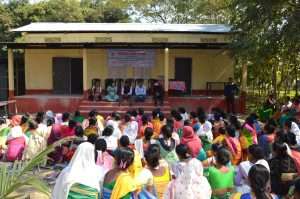 Awareness camp organized at Baksa District, Assam by ICAR-NRC on Pig
Awareness camp organized at Baksa District, Assam by ICAR-NRC on Pig
- The value chain-based extension approach should be practiced instead of adopting the traditional way of EAS focusing only on production for overall development of piggery sub-sector.
- Group-based learning approaches such as Farmer Field Schools (FFS), adopted by many South Asian countries since long in the crop sector, can be implemented for encouraging more participation and learning by women farmers and smallholders. The guidelines provided by FAO in organizing FFSs for small scale livestock producers elaborates on the flexible approach of group-based learning through FFS (FAO 2018).
END NOTE
With population growing, increased per capita income, urbanization and changes in lifestyle and food habits, the demand for meat and meat products are also rising in India. Therefore, the food supply chain has to be strengthened, including pork value chain, to cope with this scenario. To ensure sustainability of production, the piggery sector needs further attention from both policymakers and field practitioners. By empowering pig producers and other actors in the pig or pork value chain, we can uplift the piggery sector of India for livelihood and nutritional security.
References
APEDA. 2021. Export of other meat. Agricultural and Processed Food Products Export Development Authority, Government of India. https://apeda.gov.in/ apedawebsite /SubHead _Products/Other_Meat.htm
Deka RP, Bayan B, Baltenweck I and Grace D. 2019. Mapping of pork value chain actors in selected districts of Assam. Nairobi, Kenya: ILRI.
FAO. 2018. Farmer field schools for small-scale livestock producers – A guide for decision makers on improving livelihoods. FAO Animal Production and Health Guidelines No. 20. Rome: FAO. 56 pp. Farmer field schools for small-scale livestock producers (fao.org)
Mahak S, Talimoa M and Rajkhowa DJ. 2020. A way forward for revitalizing pig farming in Nagaland. Indian Farming 70(6): 23–26.
Thomas R, Singh V and Gupta VK. 2021. Current status and development prospects of India’s pig industry. Indian Journal of Animal Sciences 91(4):255–268.
20th Livestock Census 2019. All India Report. Available at https://dahd.nic.in/sites/default /filess /20th%20Livestock% 20census2019% 20All%20India%20Repor t_0.pdf
 Dr Misha Madhavan M, Scientist (Agricultural Extension), ICAR-National Research Centre on Pig, Rani, Guwahati, Assam-781131. She can be reached at mishamadhavanmsy4@gmail.com
Dr Misha Madhavan M, Scientist (Agricultural Extension), ICAR-National Research Centre on Pig, Rani, Guwahati, Assam-781131. She can be reached at mishamadhavanmsy4@gmail.com
 Dr N H Mohan, Principal Scientist (Animal Physiology), ICAR-National Research Centre on Pig, Rani, Guwahati, Assam-781131. He can be contacted at mohan.icar@gmail.com
Dr N H Mohan, Principal Scientist (Animal Physiology), ICAR-National Research Centre on Pig, Rani, Guwahati, Assam-781131. He can be contacted at mohan.icar@gmail.com
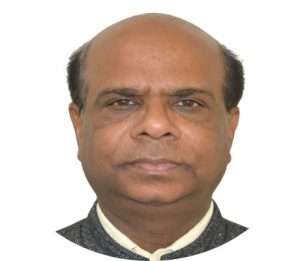 Dr. V. K. Gupta, Director, ICAR-National Research Centre on Pig, Rani, Guwahati, Assam-781131. He can be contacted at gupta.drvivek@gmail.com
Dr. V. K. Gupta, Director, ICAR-National Research Centre on Pig, Rani, Guwahati, Assam-781131. He can be contacted at gupta.drvivek@gmail.com

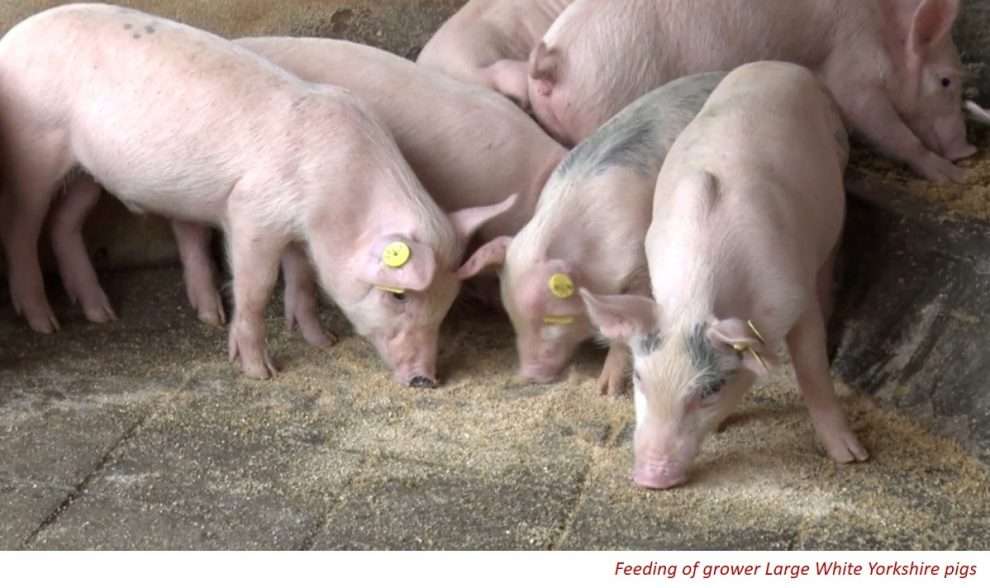
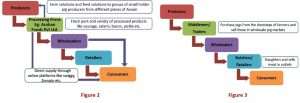 Examples of pork value chains in Assam
Examples of pork value chains in Assam
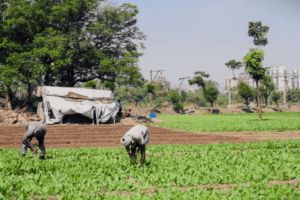

Add Comment